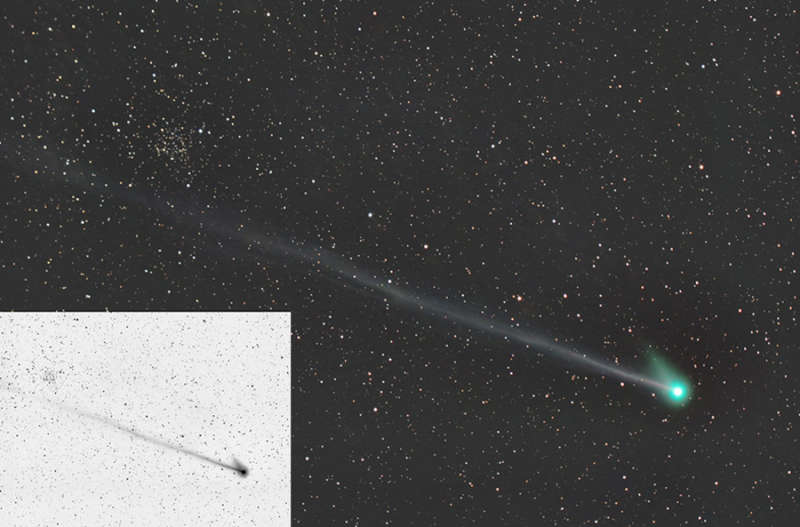
|
Credit: Rich Richins
Explanation:
Of the many comets named for discoverer
Robert McNaught, the one cataloged as
C/2009 R1 is gracing dawn skies for
northern hemisphere observers this month.
Seen here on June 13th from southern New Mexico,
this
Comet McNaught's long ion tail sweeps across the
telescopic field of view (a negative image is inset).
Remarkably, the ion tail easily stretches past background
star cluster NGC 1245
(upper left) in the constellation Perseus,
about 1.5 degrees from the comet's lovely
greenish head or coma.
The coma also sports a short, stubby, dust tail.
Of course, the
comet and background stars
move at different rates
through planet Earth's skies.
But a digital processing of many short exposures allowed
frames of comet and stars to be
separated, registered, and recombined in the final image.
To see the comet separate from the background stars, just slide
your cursor over the image.
The recombined frames show off both the rich star field and faint
details of the comet.
Easy to spot in binoculars for now, McNaught will
sink into the twilight along the eastern horizon in the coming days
as it heads
toward perihelion
(closest approach to the Sun) on July 2.
|
January February March April May June |
| ||||||||||||||||||||||||||||||||||||||||||||||||
NASA Web Site Statements, Warnings, and Disclaimers
NASA Official: Jay Norris. Specific rights apply.
A service of: LHEA at NASA / GSFC
& Michigan Tech. U.
Based on Astronomy Picture
Of the Day
Publications with keywords: Comet McNaught - star cluster
Publications with words: Comet McNaught - star cluster
See also:
